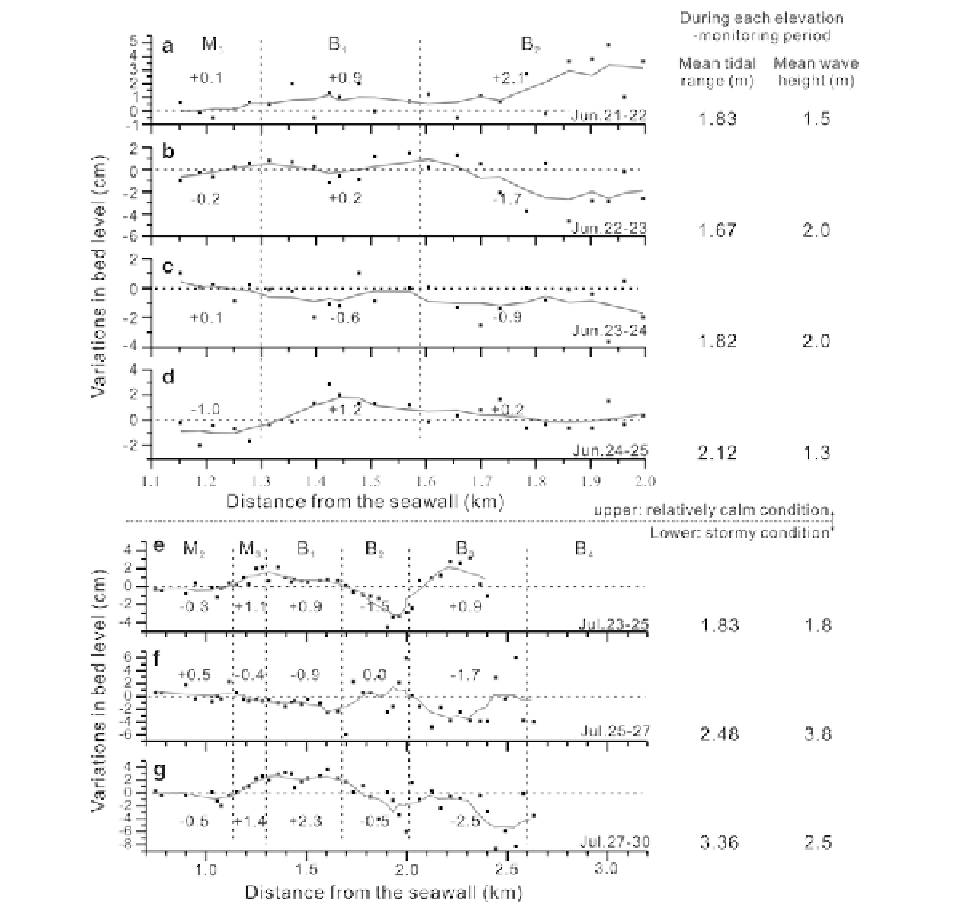Geology Reference
In-Depth Information
Fig. 9.17
Short-term (1-2 days) variations in bed level of the
intertidal flat in the Changjiang Delta (China) over a relatively
calm period June 21-25 in 1999 (
a
-
d
) and a stormy period July
23-30 in 1999 (
e
-
g
), respectively. Individual stake measurement
data were analyzed by three point adjacent average to generate a
smoothed curve, representing a general trend of erosion and
deposition across the profile. Different sub-zones of the intertidal
flat had different erosion/accretion trends in response to waves.
Mean changes in bed level over the different sub-zones were cal-
culated and marked in the figures (After Fan et al.
2006
)
frequent and intense storms in winter than in summer,
and the resulting seasonal cycles of erosion and depo-
sition are highly contrasting with summer accretional
and muddy profile of a normal tidal flat and winter
erosional and sandy profile resembling a shoreface
(Yang et al.
2005
).
Most of the subtropical coast is actually subjected
to both summer and winter storms. On the Chongming
Eastern Flat (Fig.
9.15
), the tidal-flat elevation surveying
data showed that the bare flats underwent erosion both
in summer and winter (Fig.
9.19
). The bare flats were
lowered by a few decimeters during sporadic typhoon
strikes, and the same magnitude of deposition usually
took place soon after the erosion events in summer. By
contrast, the winter erosion season began in mid-
October with sharp erosion of a few decimeters, and
followed with light erosion throughout late March.
It lasted for more than 5 months before entering a gradual

